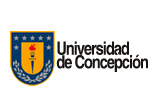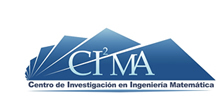News
Geosciences study featured advanced applied numerical analysis techniques and was recently published by the prestigious publisher Nature
Through a deep and multidisciplinary study of the Valdivia (1960) and Melinka (2016) mega earthquakes, a group of researchers concluded that frictional and rheological properties of the forearc govern the magnitude and recurrence patterns of earthquakes in Chile".
This is part of the main results of a study described in the article 'Recurrence time and size of Chilean earthquakes influenced by geological structure', published in the most recent issue of the specialized journal Nature Geoscience (Nat. Geosci.).
This research in the field of Earth sciences had an important contribution from applied mathematics, specifically from techniques of numerical analysis of partial differential equations. That is why one of the authors of the article is the director of the Mathematical Engineering Research Center, CI²MA, of the UdeC, Dr. Rodolfo Araya Durán.
The also academic of the Faculty of Physical and Mathematical Sciences of that university and alternate director of the PRECURSOR group Project (ACT 192168) explained that "there are many scientific challenges in the area of geosciences that can be better understood using the mathematical tools that we develop in our center. For example, the finite element method can be used to numerically simulate the recurrence of mega earthquakes considering some simple rules."
"It is worth noting that the numerical schemes used in this work to simulate part of some friction terms were published in a WoS journal in the area of applied mathematics. This is the ideal of interdisciplinary work, obtaining practical and theoretical results using new mathematical schemes", detailed Dr. Araya, also an associate researcher at the Center for Mathematical Modeling of the U. of Chile.

The main author of the work is Joaquín Julve Lillo of the Department of Earth Sciences of the Faculty of Chemical Sciences of the same university, who explained that "the southern segment of the Chilean subduction zone is especially important because it has hosted the largest earthquake in recent history, the Mw9.5 Valdivia mega-earthquake in 1960. This event was extremely destructive at the time, also including the generation of a tsunami that affected a large part of the coastal localities".
"56 years after this mega earthquake", Julve detailed, "the southern segment of the Valdivia co-seismic rupture was reactivated again with a Mw7.6 earthquake in Chiloé. This second event is quite particular because it only ruptures the deepest part of the seismogenic zone of the subduction fault. In 2018, my PhD guiding professor Dr. Marcos Moreno, publishes a simple model in which he proposes that the deeper part of the seismogenic zone is affected by fluids and accumulates stress faster than the upper part. This generates a greater recurrence of deep earthquakes during the seismic cycle."
"In this work what we did was to test this hypothesis using numerical models fed with geological and geophysical data. We worked in close collaboration with Dr. Sylvain Barbot, who is the one who has solved the fundamental physical equations to be able to implement a numerical model of this style", explains the also student of the PhD in Geological Sciences of the UdeC.
"The main advance", Julve detailed, "is that we were able to determine that the geological and thermal structure and the average hydraulic state in the subduction zone govern the size and recurrence of earthquakes in the seismogenic zone. In order for us to reproduce the surface deformation and paleo-recurrence obtained from observations, it is necessary that the deeper part of the seismogenic zone has a higher pore pressure ratio than the upper part. This implies that it requires the presence of fluids at this depth that are being released after metamorphic reactions and channeled by the forearc structure".
Regarding the fact of having published in a specialized journal of such a prestigious publisher as Nature, Julve confessed that "I never thought of publishing in a journal of this style at this stage of my development as a researcher. I would say that I received much of the motivation from my guiding professors, who encouraged me to send the work to this journal".
"While it is true that the process is extremely long and stressful, now the main feeling I have is of peace of mind that I have done a good job, multidisciplinary and mostly with national researchers. I would not have achieved this objective without the help of all the co-authors", he emphasized.
The authors of the article are: Joaquín Julve (Department of Earth Sciences, UdeC), Sylvain Barbot (Department of Earth Sciences, U. of Southern California), Marcos Moreno (Pontificia U. Católica), Andrés Tassara (Department of Earth Sciences, UdeC), Rodolfo Araya (Department of Mathematical Engineering, UdeC), Nicole Catalán (Department of Earth Sciences, UdeC), Jorge G. F. Crempien (Pontificia U. Católica) and Valeria Becerra-Carreño (Pontificia U. Católica).

